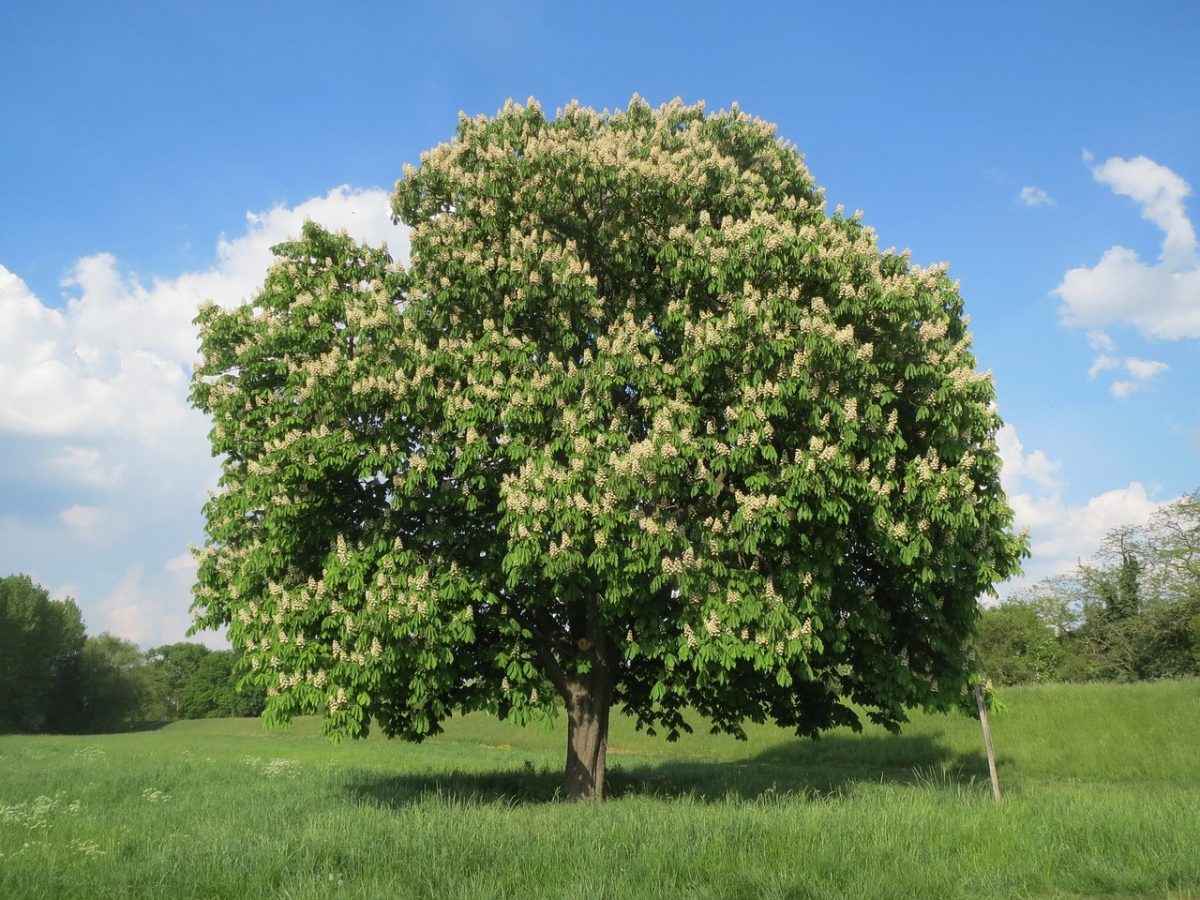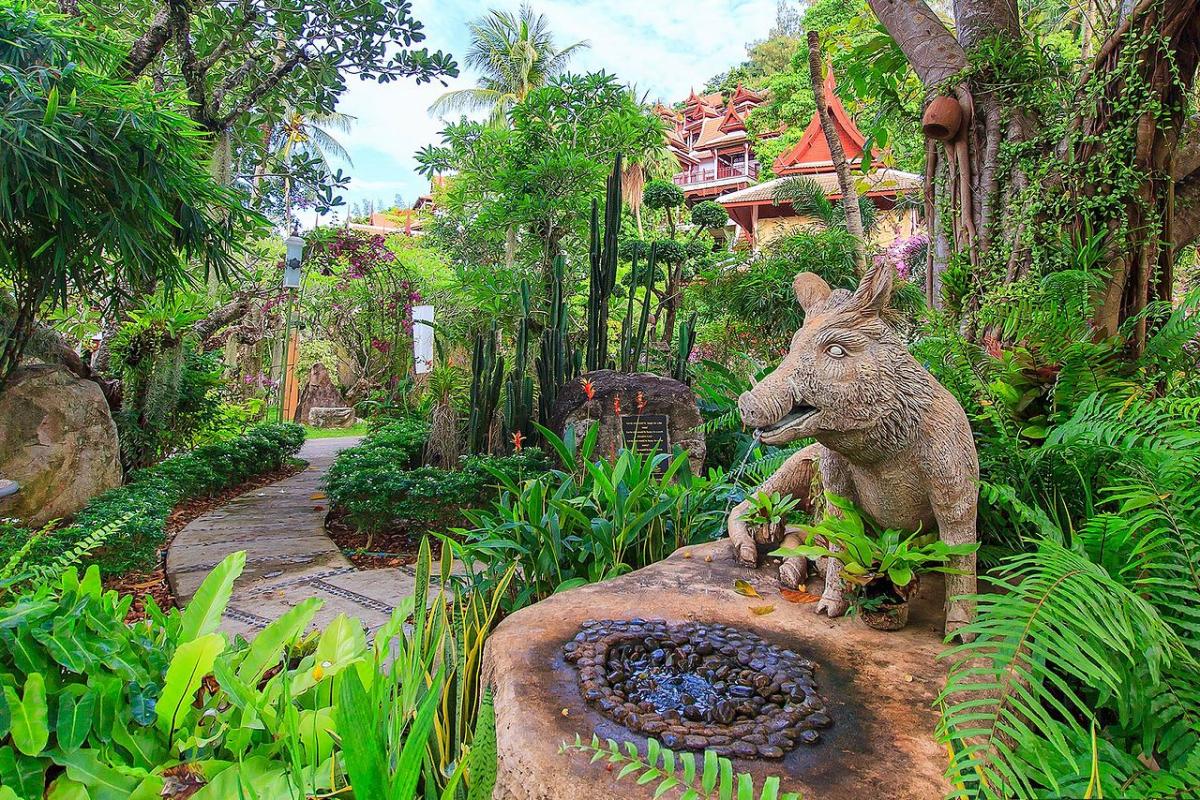
Image – Wikimedia/Thavornbeach
All the plants we see and grow need water to live; however, there are some that, without being aquatic, need much more than the rest. Many of them are native to humid tropical forests, where it can rain every day; Others, on the other hand, are found in temperate forests, where it also rains a lot, especially in the spring and autumn months, and where the humidity of the air is also usually very high.
If you live in an area where rainfall is frequent and abundant, you will have to choose plants that need a lot of water. In case you don't know what they are, don't worry because We are going to tell you about ten of them: five to have in a garden without frost, and another five that resist well below zero temperatures.
Plants to have in a frost-free climate
The vast majority of tropical plants need plenty of water to be really well, but there are some that, based on my own experience, need a little more attention than others, like these:
Rattan (canna indica)
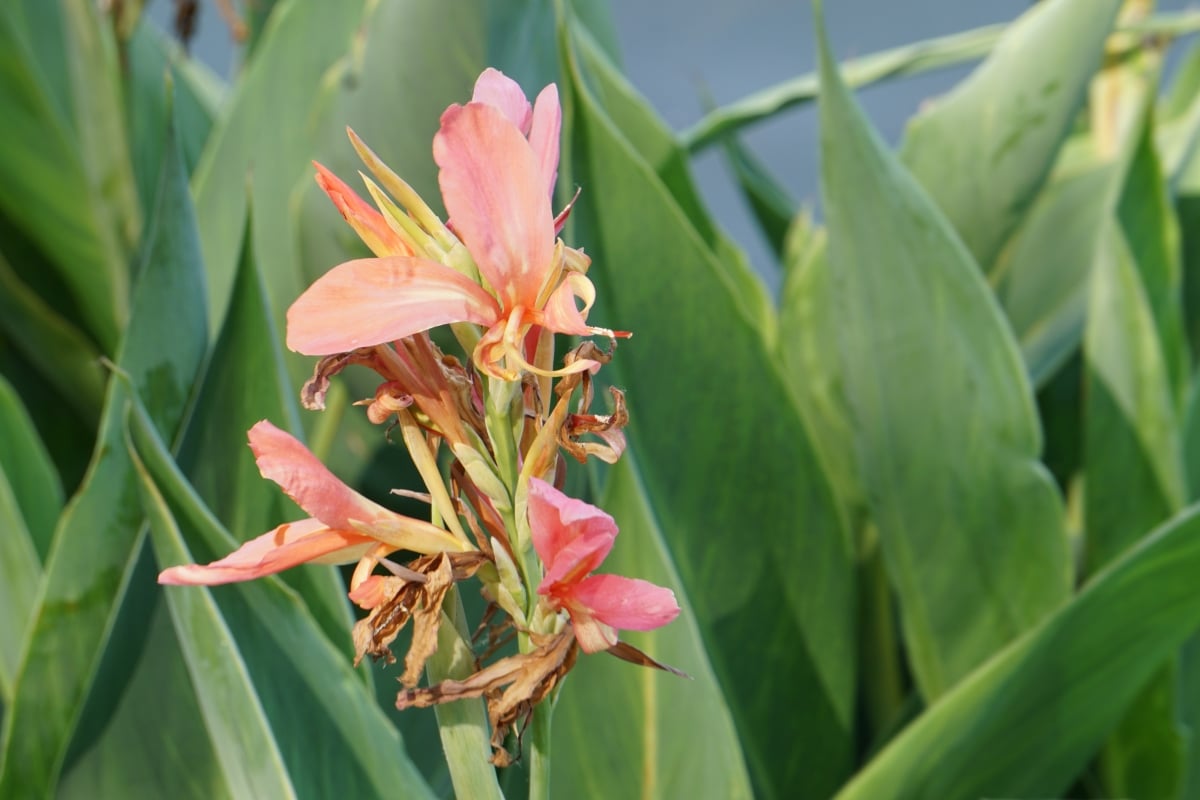
La cane of the Indies It is a plant that we plant a lot in gardens and pots in Spain, as well as in other parts of the world. Although the rhizome can withstand the cold somewhat, the leaves are damaged as soon as the temperature drops below 10ºC. These leaves can be green or reddish, depending on the variety, and can reach a height of up to 1 meter or meter and a half. It normally blooms during the summer, although if spring is still cool, it is normal for it to be delayed a bit.
It grows very fast, but for that to happen it needs a lot of light, direct sun if possible, and water.. It is not necessary to have the soil flooded daily, but it is advisable to water often if we see that the soil dries out.
Turmeric (Curcuma longa)
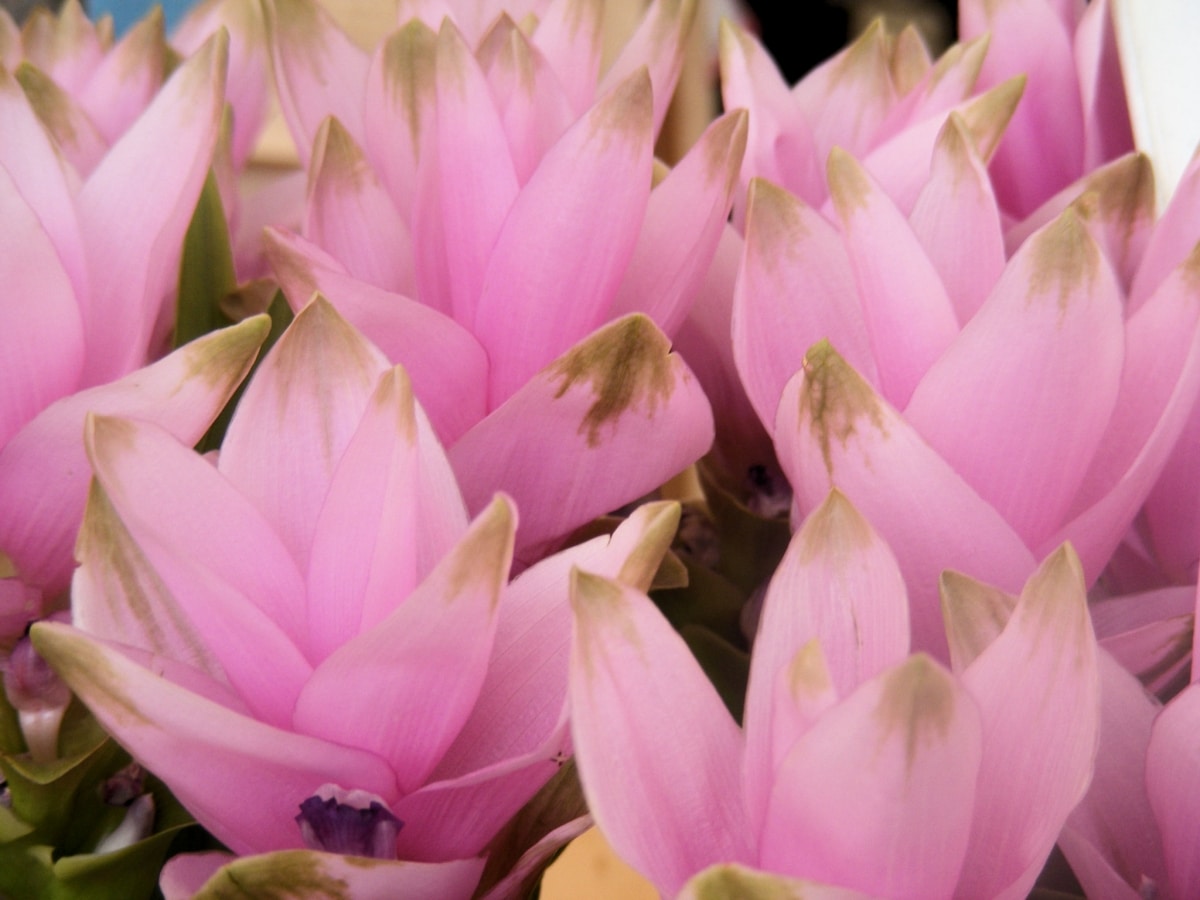
Image – Flickr/sophie
La turmeric It is a herbaceous and rhizomatous plant that does the same thing as the Indian cane: the rhizome withstands frost without problems (up to -12ºC in its case), but the leaves die when the weather starts to cool down. So, although we have included it in »plants for gardens without frosts», in reality you could have it in a place where the temperature drops below 0 degrees, but knowing that during the winter it will be at rest.
It reaches a height of up to 40-50 centimeters, and produces lilac or white flowers in late summer.. These are not aromatic, but I can tell you that they are beautiful.
ensete
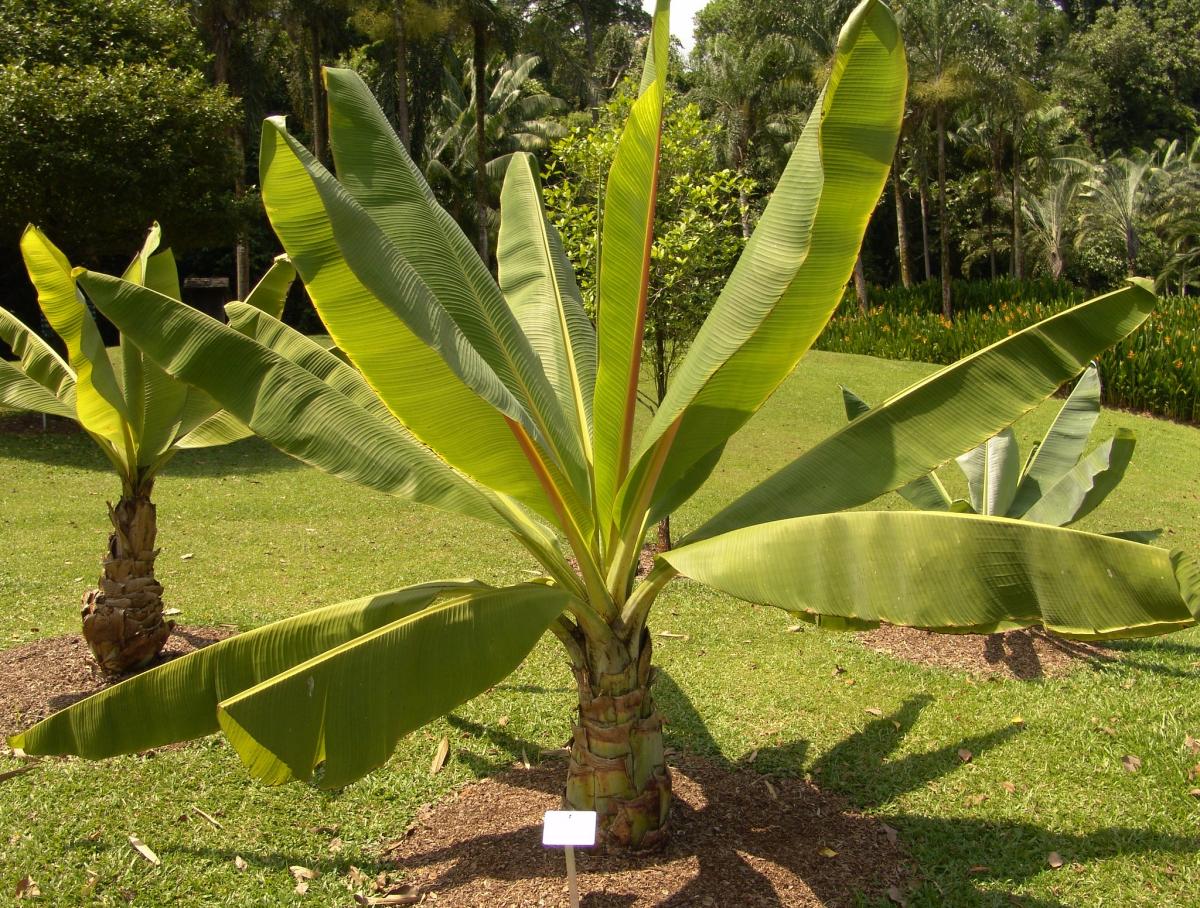
Image - Flickr / Drew Avery
One of the most cultivated species of this genus in Spain, perhaps the most, is the Ensete ventricosum. It is often confused with banana trees, that is, with plants of the genus Musa, but unlike these they do not produce suckers, and only flower once in their life, after which they die. But even so, we are talking about plants that can live for several years: about 7 or 8. They can reach a height of 4 to 7 meters, with a pseudo-trunk of up to 40 centimeters.
They need a lot, a lot of water. I have two (one of them in the ground) and I'm sure if I watered them every day they would grow much bigger than they do. In addition, it is important that you give them direct sunlight, if possible throughout the day.
Geraniums (Pelargonium and Geranium)
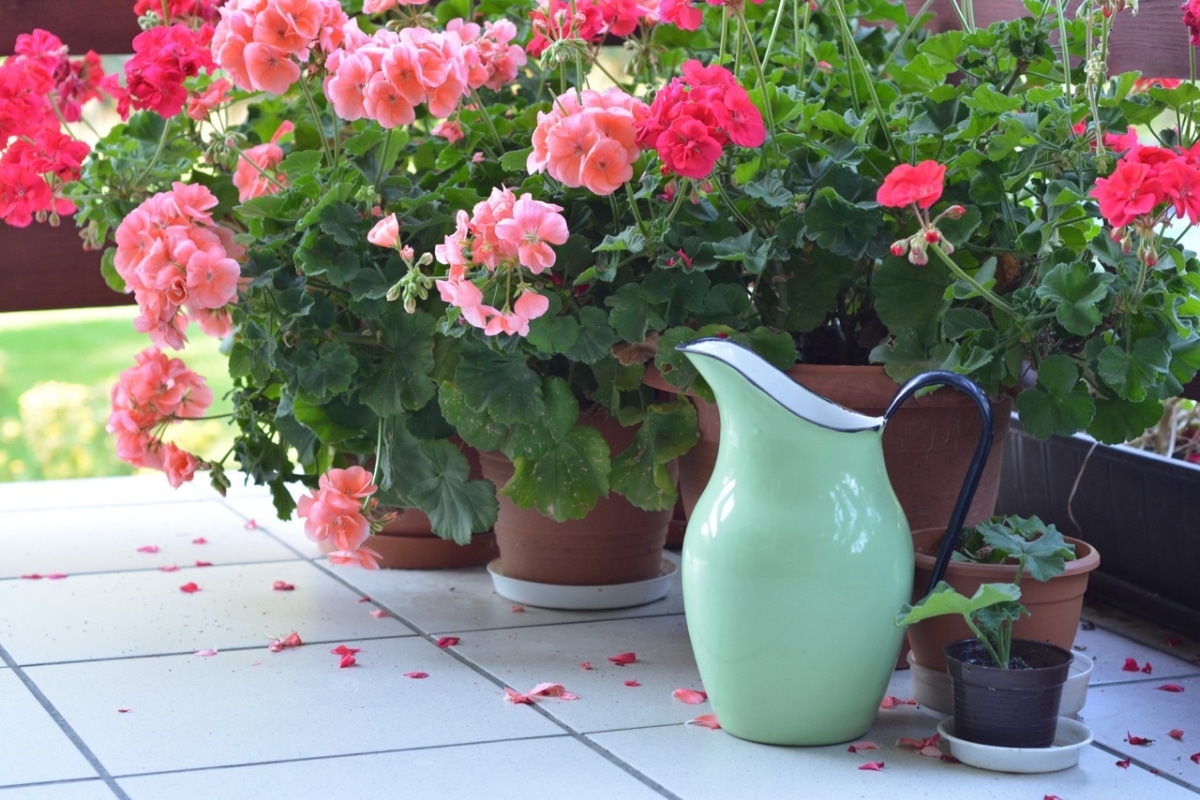
The geraniums y pelargoniums They are small shrubs native to Europe as well as tropical Africa. They reach a height of between 15 and 80 centimeters, and are characterized by having green leaves with a rounded shape. They bloom in spring and summer, and when they do they sprout pink, red, white, lilac or yellow flowers.
It is important that they do not lack light or water. During the summer they may need to be watered almost daily if the soil dries out quickly. And although they can withstand the cold, it is preferable that they are not exposed to temperatures below 0 degrees to prevent damage.
Spathiphyllum
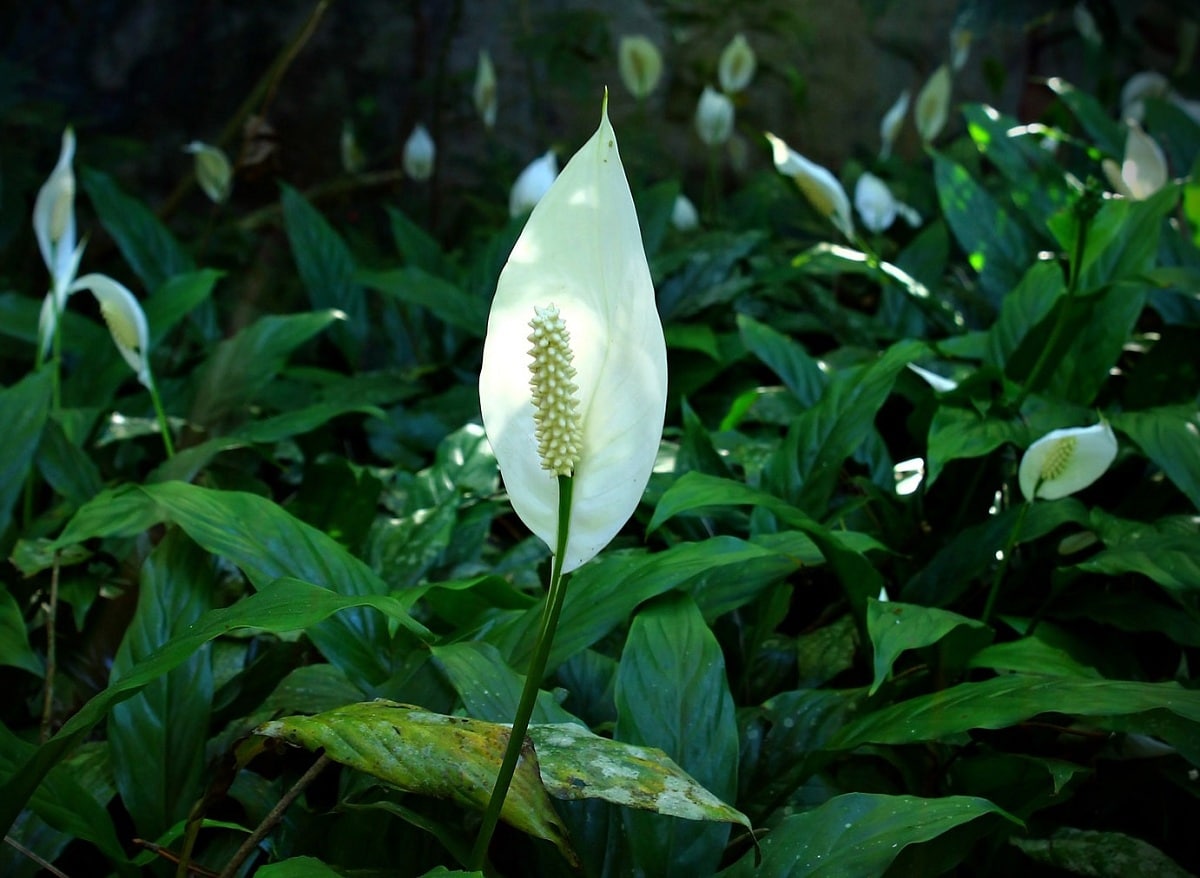
The peace lily or Spathiphyllum, is a herbaceous plant native to the tropical forests of America and the western Pacific. The most cultivated species is spathiphyllum wallisiiWhich It can reach about 70 centimeters in height.. The inflorescence can be white or pink, and usually sprouts in summer, although it can also do so earlier, in spring.
Requires indirect light, warm temperatures year-round, and moderate watering frequency. In this sense, it is important to say that when it is thirsty, its leaves "hang", they lose firmness; but they recover quickly as soon as it is watered.
Plants to have in a temperate climate
If you live in an area where temperatures drop below 0 degrees, or in other words, if there are frosts every year, it is very important that you acquire plants that are capable of withstanding cold, ice and/or snow if It also usually snows, like these:
Horse Chestnut (Aesculus hippocastanum)
Many trees in temperate climates, especially those that live in or near mountain forests, are not at all resistant to drought. One of them is the horse chestnut, which It is a deciduous plant that reaches a height of up to 30 meters. It blooms in spring, producing very pretty white flowers. But it is important that it does not lack water, especially during the summer.
I have one in the south of Mallorca, and he has a hard time during heat waves, since apart from the temperature, which reaches 39ºC, there is also a drought. And of course, I water it up to 4 times a week, but even so, you can see that it doesn't like being there very much: its leaves fall either just when summer ends, or shortly after; that is to say, you cannot see that autumnal change that could be enjoyed if the weather were cooler and if it rained more. It is very resistant to frost down to -18ºC.
Wisteria (Wisteria sp.)
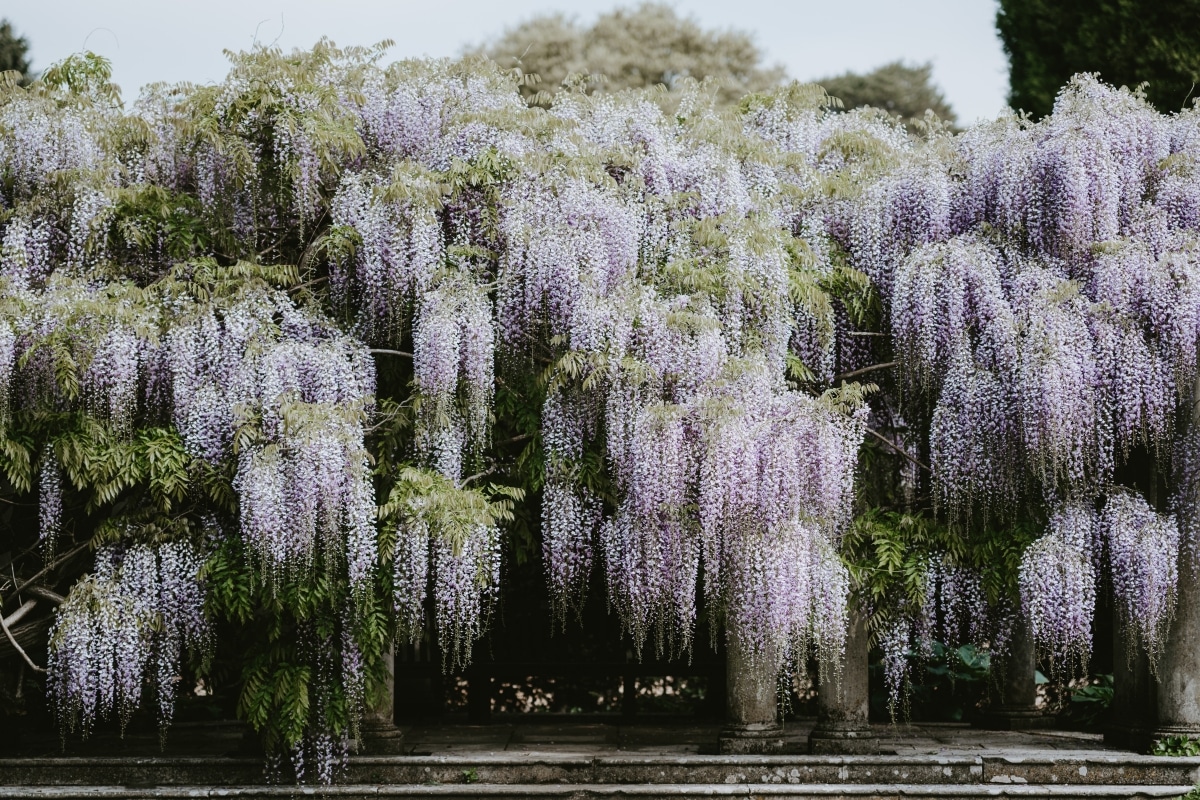
La wisteria It is a deciduous and climbing shrub native to Australia and East Asia. It grows up to 20 meters tall, and produces green leaves that turn yellow in the fall.. In spring it blooms, and this is when hanging clusters of lilac or white flowers sprout.
It is a plant that wants direct sun, as well as soil with an acidic or slightly acidic pH. You do not have to put it in alkaline soil because, otherwise, it would have iron chlorosis. Also, it has to be watered moderately, more in summer than in winter. It supports cold as well as temperatures down to -20ºC.
Soap holder (saponaria officinalis)
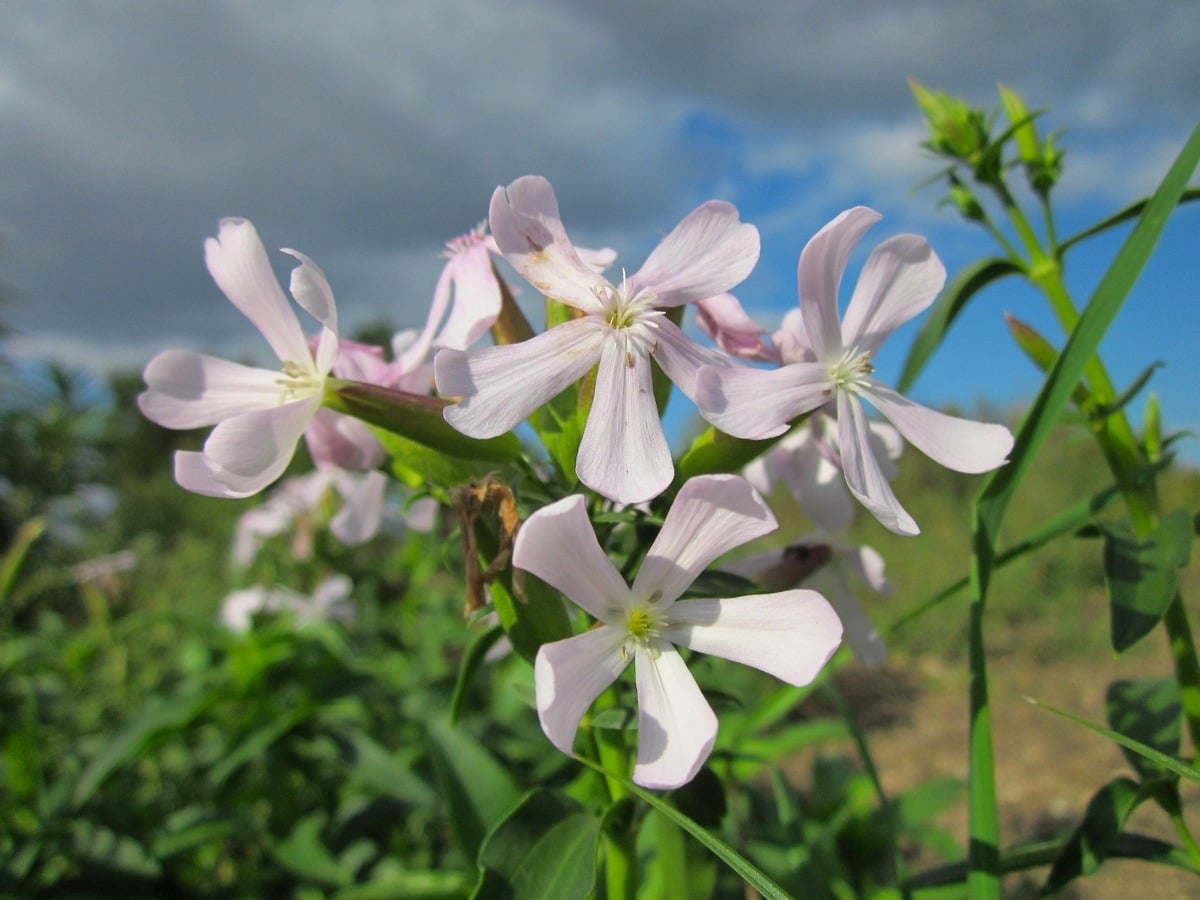
La soap grass It is a perennial native to Europe. Reaches a height of up to 60 centimeters, and develops green lance-shaped leaves. Its flowers are violet, or light pink, and very aromatic. These sprout in spring.
It grows fast, as long as it is placed in a sunny place and care is taken not to go thirsty. It resists frosts down to -12ºC.
Rose bush (Rosa sp)
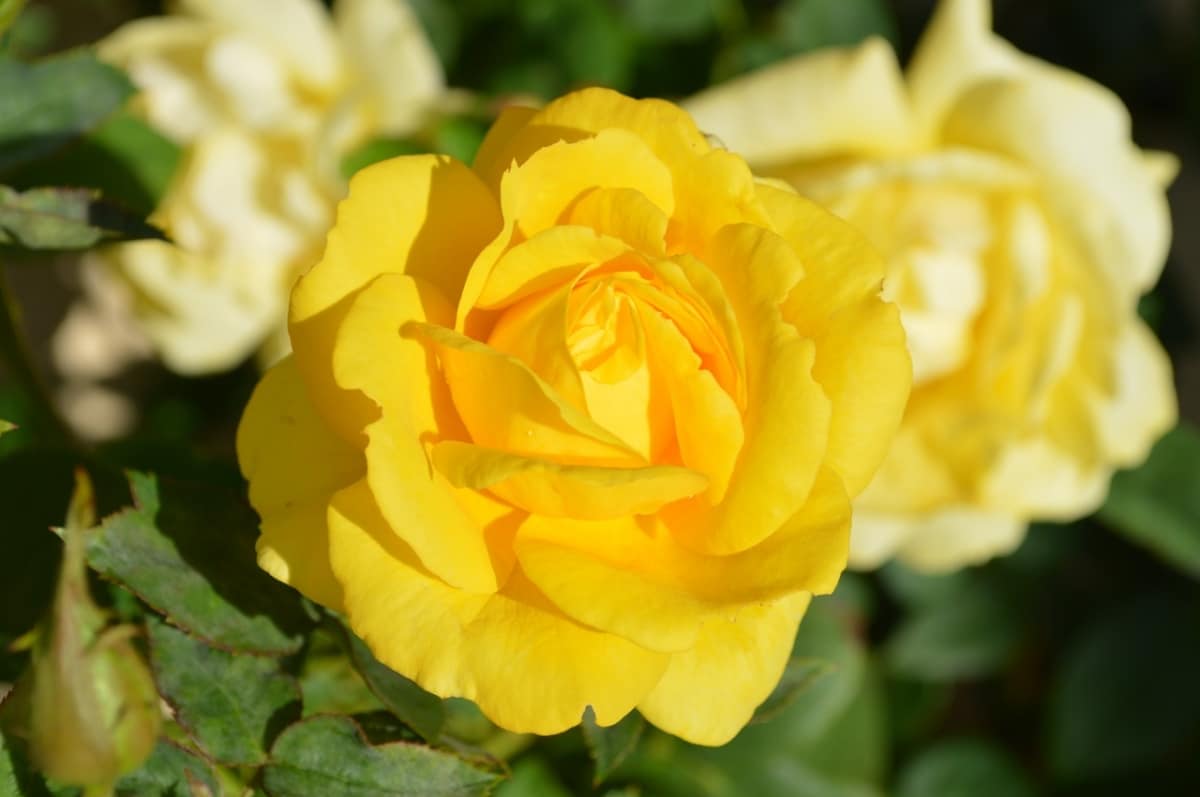
El rosebush It is a thorny shrub that produces magnificent flowers for much of the year. There are many varieties, which grow around one or two meters, with the exception of climbers that exceed 5 meters.. The flowers are white, red, pink, yellow, or even bicolor.
It must be placed outside, in full sun. And, of course, he touches watering sparingly. It is necessary to avoid that the soil is always wet, but even so, it should be watered 3-4 times a week during the summer as long as it does not rain.
Sarracenia
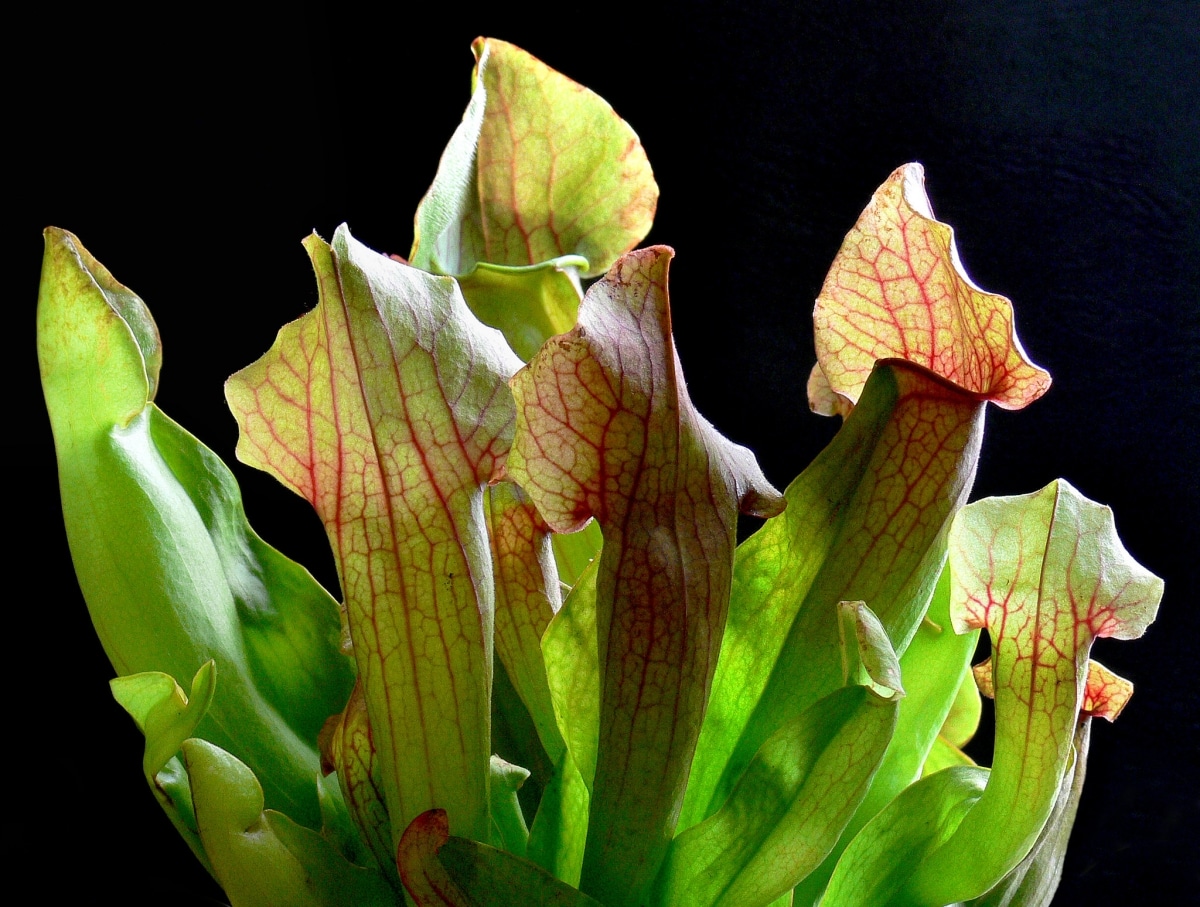
Image – Flickr/James Gaither
Plants of the genus Sarracenia They are carnivorous native to North America. They are rhizomatous herbaceous plants that have transformed their leaves into a kind of vase that, in reality, is a trap for insects since it contains water. These traps can be more or less large, and of very different colors, but they are usually between 30 and 100 centimeters tall, and are some shade of green or red. In spring they produce flowers that are usually pink.
They need to be outside, in full sun, and in plastic pots with holes. As a substrate, they should be given a mixture of unfertilized blond peat with perlite in equal parts, or a substrate for carnivorous plants that comes already prepared. And then, you just have to water them with distilled water several times a week. They resist up to -4ºC.
Have you seen some of the plants that need a lot of water on this list?
